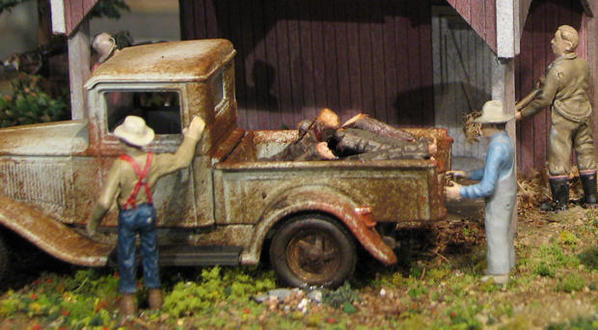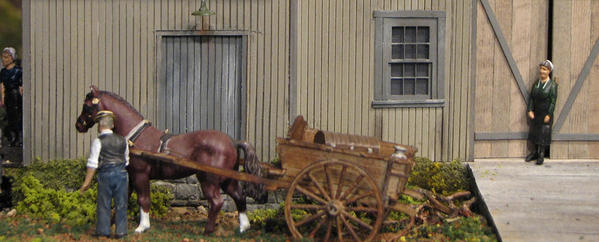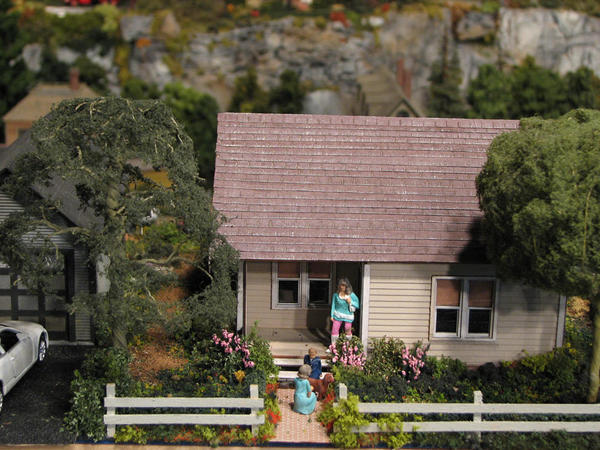Dave, I do not color my sawdust at all. I save sawdust from wood cutting on my table saw, screen it to get out all the course material and then mix it with varying amounts of commercial grass mixes. This is because, here in the West, most grass is not an Eastern lush green, but has a lot of yellow in it. So, by varying the amount of green grass mix, I can create varying scenes from very dry areas to more lush ones. 
I must say, PeterA, that is a very effective vista. And I subscribe to your technique of using a blend of handmade and commercially available products.
Dave50, I would recommend that, in addition to what you may end up making by hand for the creative adventure of it, that you seriously consider also using ground-covers made available by Dennis Brennen. I use most all of his products to supplement what I harvest from my yard and garden and, also, buy from Scenic Express, and have found those endless combinations to be very effective in expressing my creativity when crafting scenery.
Also, the creative voices available through this forum are inspiring and profound. Seeing and learning from all their voices is a creative adventure in itself. At least, I have found it to be so.
Whether we hobbyists are coloring sawdust, crafting straws into downspouts, using wooden cocktail stirrers for cottage walls or fences, or using what everybody else has made and combining them all into an effective landscape, village-scape, or city-scape, etc., the creative exercise of it all is very, very good for us. The satisfaction is limitless, IMHO, so welcome aboard the hobby, and have yourself a heckofa good time!






FrankM.
Layout Refinements




















